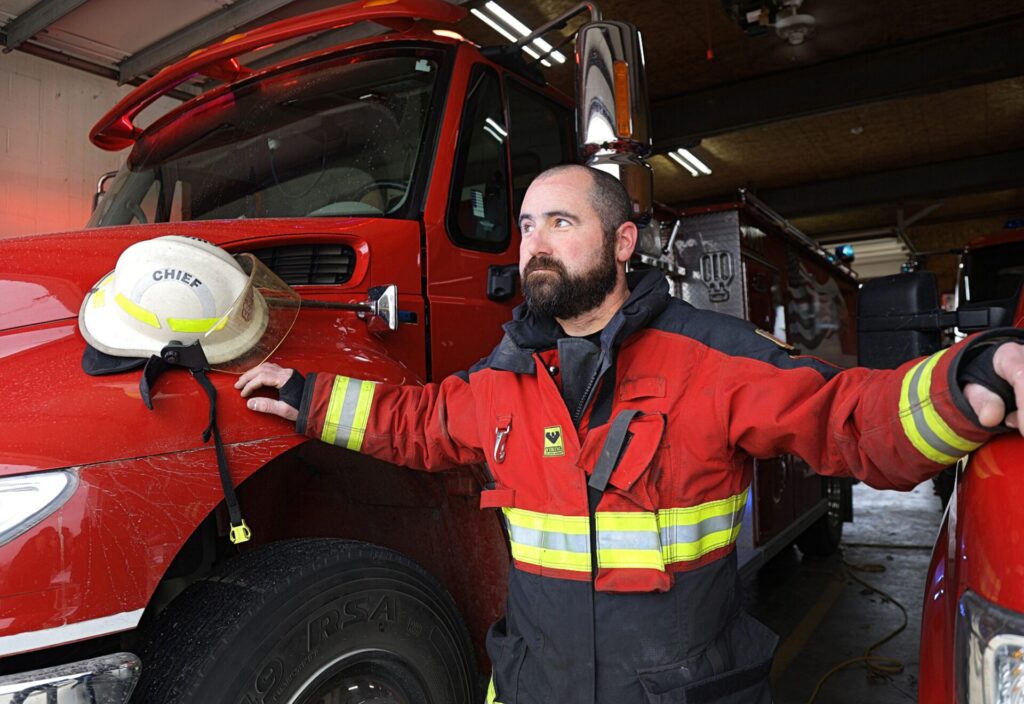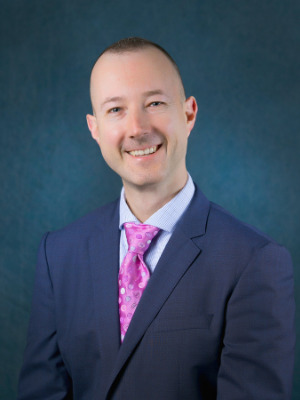Iowa Volunteer Fire Chief Gets Motion-Preserving Cervical Disc Replacement Surgery
Lost Nation Volunteer Fire Chief, Robert Atkinson, 45, has no time for pain. A 27-year veteran of the Lost Nation Fire Company, Atkinson leads a force responsible for protecting the life, property and welfare of residents within a 100 square-mile district in northeast Iowa.
He carries that load on very broad shoulders along with the responsibilities of fatherhood, community leader, and serving as a job site foreman over homebuilder crews for Sheets Construction. And then there’s his family legacy to uphold. “My father was the Lost Nation fire chief before me, and I have at least five uncles and 12 cousins who are also firefighters in Clinton, Dubuque, and Dewitt, Iowa.”
His nearly 30 years in construction and 27 years on the force has taken a physical toll, and a recent neck injury left him barely able to use his arm.

“I like to move. I need to move. I enjoy the physicality of my work. I’m on my feet all day, doing heavy lifting about 40 hours a week in construction, then I spend another 20 hours a week on mandatory fire training, all while managing 26 trained volunteers and eight EMT’s on the force.
“Yeah, I’m busy, but I’ve grown up in Lost Nation and love the work.”
As with fire calls that come day or night, Robert has learned that life’s unpredictability leads to setbacks. “My arm starting going numb after I hurt my shoulder, and I started to lose my ability to grip objects at work. I was worried my arm and hand would give out, and when you’re lifting heavy sheetrock on a ladder, that’s dangerous.”
A physical therapist identified the source of numbness and pain in his neck, and an MRI confirmed three herniated discs. ORA Orthopedics’ Fellowship-Trained Spine Surgeon, Dr. Myles Luszczyk offered Robert two surgical options: a typical spinal disc fusion or a cervical disc replacement.
Dr. Luszczyk says although cervical fusions remain the mainstay of treatment for many surgical conditions involving the cervical spine, disc replacements are becoming viable options for patients with certain spine afflictions.
“The major benefit of a disc replacement is that it is a motion-preserving procedure. The difference between the two procedures is that while one procedure fuses the disc so it never moves again, the other involves inserting a metal implant that allows neck motion to be preserved.”
“With a cervical disc replacement, we actually insert a new cervical disc implant, made of the same type of hardware material we use for knee and hip replacements.”
Dr. Luszczyk says Robert was a good candidate for this motion-preserving procedure due to his young age, active lifestyle, and good health. “Cervical disc replacements are an option for younger healthier patients who may only have one or two levels of disease.”
“Older patients with more degenerative discs along the spine are likely to benefit from the traditional fusion approach, especially those who have other risk factors including osteoporosis, poor quality bone, or who are dealing with multiple disc segments. The goal of these surgeries is to reduce arm pain, prevent further damage to the nerves, and preserve motion in the neck.”
For Robert, the procedure not only preserved his neck motion, but allowed him to protect his career and lifestyle. “The surgery took about 40 minutes, and I was home the next day. I never took any pain pills and after PT, I was back to work within a couple of weeks.”
Robert says four months later, he’s back to carrying those responsibilities on his broad shoulders in the work he enjoys.
“I feel great! Dr. Luszczyk was thoughtful and very straightforward. I appreciate how he actually went over the two options about fusing or disc replacement. This procedure has made all the difference, because I am back to the work I enjoy.”
Dr. Luszczyk also says for patients like Robert, they no longer need to travel to larger cities to get this procedure. This is now an option ORA spine surgeons are excited to offer, either in the outpatient or hospital setting.
“We always want to preserve motion if we can. The human body is made to move and the cervical disc replacement protects and preserves that motion.”
Candidates are encouraged to contact ORA’s Spine Center for Excellence to determine what neck or spine procedure is most beneficial to get you back to life and what moves you.


